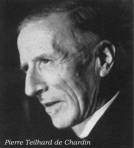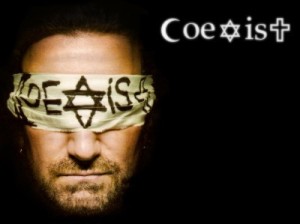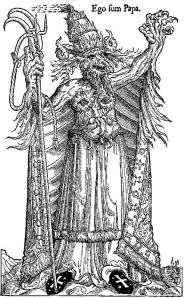My grandmother was a sturdy soul. Her life consisted of taking care of her demanding German husband, incessant cleaning of a spotless house, speculating about the conjunction of rain clouds and her arthritis, and calling the church rectory for updates on mass times and confession. She came from a large, loud, tuneful Irish family, pronounced film as “filum” and laughed at jokes three minutes ahead of the punchline. ”Hey Nonnie,” I would say, “Did you hear the one about the priest and the chiropractor?” The laughing would start ere the words were out of my mouth.
She was patient, gullible, superstitious, carping and kind. She didn’t like dogs or most of her neighbors, squinted at dust, sermons about Mary, and occasionally at me. If she had secrets or dark corners to her existence they were buried with her and will remain forever unknown.
She now exists in photographs–often with the image of my grandfather standing in the background with a slight frown–not wishing to be in the picture but unwilling to move entirely out of range.
The photographs are important because when they were taken–mainly in the 1960′s–pictures were a bit of trouble: camera models, film, exposures (as in number of), light and focus were part of the vocabulary. No snapping your cellphone at any stationery or moving object that caught your fancy and then uploading images of you and your best friends by the dozen for the delectation of complete strangers.
I have a theory that the less complicated picture-taking and image- making have become the less sophisticated our memories and imaginations have become–a complaint some social theorists have leveled at “comprehensive” museums and zoos. Imagination is not stretched. Memory is not exercised. Connecting impressionistic dots, sometimes captured years apart, is not required. We live in the eternal present of the utterly familiar and the easily available Now. History is not needed to explain the familiar. We know all about it. Thus history is a primary casualty of the widespread feeling that the unfamiliar–especially the past–is alien to the Now.
The tandem growth of religious illiteracy and EZ atheism emerges from the same matrix, one where what is “new” is regarded as good and what is old, or requires time, patience and interpretation, is regarded as irrelevant. As the cultural gospel of America has always cherished this principle anyway (“A country without history for a people without memory”) the imagination crisis is especially prevalent in the USA. Religious crudity is nowhere cruder or saturates politics more thoroughly or with greater dull predictability. Discount atheism, especially of the new and in-your-face variety, is nowhere more disagreeable or less philosophical.
It is enough for the American Catholic to know when the pancake breakfast begins (“after the 9 o’clock”), never mind the aesthetic torpor that his church offers as a sedative for his under-active conscience or the essentials of the faith he never bothered to learn. It is enough for the liberal protestant to know that a collection is being taken up for Tsunami victims and for the conservative Christian to live in the cozy knowledge of Jesus’ saving grace–which entails the belief that abortion means killing babies and that Democrats want to demolish churches and put up mosques. It is enough for the atheist to see the deformed opinions of the religious majority as proof positive that he is right: God doesn’t exist and religion is for imbeciles.
The fact is, all four of the above have developed their beliefs through packthink. Stem cell research does not entail killing babies. America is not a Christian country. Believing in God is not the same as belief in elves, fairies, and the Loch Ness Monster. To be fair, the Catholic did not arrive at her position by reading Aquinas or the Protestant by reading Jonathan Edwards or the Muslim fanatic by reading Ibn Rushd or the atheist by reading Julian Huxley (an atheist supporter of Teilhard de Chardin, a Jesuit whohad read Aquinas). They got there by reading pamphlets and the back end of cars.


What each group seems to be happy with is the discounted version of the “faith” they have chosen to embrace. Coming “out” atheist, a mildly cool social stance similar to coming out gay in the nineties, requires the same level of intellectual commitment as coming out Christian, a mildly cool stance of the 1970′s when unseen forces (in Washington) convinced the believing masses they were in for a new persecution by neo-pagans, secular humanists and freedom-hating liberals.
Our presentism, symbolized in the free flow of limitless images and text messages, no longer needs ideas to survive. That is why bumper stickers have replaced chapters in books as the all-you need-to know summation of belief and unbelief. ”My Boss is A Jewish Carpenter,” “I Support a Baby’s Right to Choose.” “‘Worship Me or I will Torture You Forever’-God,” “Organized Religion: The World’s Biggest Pyramid Scheme.” The hostility among groups and even within groups is not about ideas but about what one side is prepared to believe about the other: fakery not fact, histories robbed of historical location and philosophical positions devoid of premises and analysis. It is a contest for followers lifted out of the Forum and plonked down into the Colosseum–where both sides will eventually lose.
Which brings me back to the lessons we can learn from photographs. It isn’t the case that religion has not evolved. But it is the case that religion has been, in evolutionary terms, unsuccessful in explaining itself to the twenty-first century–and to much of the twentieth. The increasing drowsiness of the flock when it comes to core doctrines may be a blessing for beleaguered theologians who otherwise would have to go on defending what the faithful have ceased to care about. ”Average” believers have defaulted to ground where they are more comfortable–to social issues and sexual ethics, buoyed by a thin belief in scriptural authority and a woeful lack of information about the warrants and religious justification for their commitments. As religion can only thrive when its explanatory mechanisms are coping with change, its explanatory failure will ultimately prove to be catastrophic, and no new theological idiom will arise to save it. In my opinion, this has already happened, and not only in liberal and radical circles.
This should serve to make atheism triumphant, but it doesn’t. If theology has lost its voice and credibility, atheism has lost its imagination and coherence. It has done this by offering, instead of a vision of the godless future, the absurdities and atrocities of religion as the sum total of its own rectitude. There is nothing wrong with itemizing the failures and hypocrisies of religion; but it does get repetitious after a while, and then the question becomes the Alfie question: What’s it all about?
And there is this detail: The errors-of-religion-motif does not originate with atheists but with religion. It goes back to the reform movements of the late Middle Ages, and to the Reformation itself, unique among the chapters of western civilization in its brutal treatment of popes, doctrines and sacraments.
Religion has traditionally been the best ensurer of reforms within religion, controlling the excesses and extremities of the religious appetite for a thousand years. It did this and was successful in keeping the beast from devouring its own tail by offering better ideas, different “truths,” a simplified diet and an accommodating attitude towards movements that would finally grow up, leave home, and not write back–secularism and humanism to name two. What it never did, or was never prepared to do, was to offer no religion in lieu of bad religion. It has survived into an era where many opponents have joined the chorus that all religion is bad religion.
Yet for atheists to assume that their rejection of God is anything more than an opinion based on snapshots of what they know about Catholics, Jews, Muslims and Protestants is a misshapen view of their accomplishment.
The aggregate outrages of religion do not constitute a proof of God’s non-existence, nor establish a moral case for atheism. The accumulation and “sharing” of snapshots of things that are plainly ridiculous about religion does not enhance the claim that unbelievers are smarter than believers. The documentation of error is not the same as the discovery of the truth. Ridiculing the beliefs of our distant faith-obsessed ancestors or the profanity of violence that seems to soak the pages of the Hebrew Bible, and more recently the Qur’an, belongs to other centuries: it’s been done. It’s good for a laugh, or a gasp, not for a lesson.
And a final thing. If the contemporary atheist is really interested in the harmful effects of religion, he is up against two truisms that run counter to evolutionary wisdom: the adaptability and survival of religion, despite texts and practices assumed to be harmful to human society, and the fact that atheism has so far struggled unsuccessfully to replace religion with a new diagram of human values. Unlike Alvin Plantinga, I don’t regard these phenomena as real facts, as “evidential” of the truth of religion, or as reliable justifications of religion based on common sense. This is because I haven’t the foggiest idea of what it means for religion to be “true” in the sense analytic philosophy comprehends the term.
But I do have idea of what values religion expresses idiomatically and crudely in ways that have occasionally challenged the human imagination. If religion has a survivability quotient, that can be expressed in evolutionary terms, it is a human quotient. In their independent ways, the atheist Julian Huxley and the believer Teilhard got that much right.
I personally believe that the survival of religion can be explained in purely rational ways, and with no guarantee of lifespan. I also happen to believe that atheism, if it is an informed and historically critical atheism–aware of its own past as well as of the religious past from which it artificially emerges–can develop new templates for human value that test the imagination in the same way that the interpretation of images and artefacts from the human past test, and are resolved in, the imagination through religion.
The elevation of atheism from opinion to something of much greater consequence begins when we see that belief and unbelief are aspects of the same reality. Looked at in the starkest light, belief is only the other side of unbelief. It is not a distinction that has the valence of right and wrong. It is pretty clear which came first, what images became dominant, which ones were lost in wars, through subjugation, and by assimilation. Just like your family album when images were scarce, real and not easily improvable, the total picture of religion that the atheist is called upon to interpret is complex and requires a thoughtful charting of the distance between the rarefied image and the inquirer, a conversation between past and present which is more than an indictment of crimes. It requires, as Gauguin said about imagination, “shutting your eyes in order to see.”






